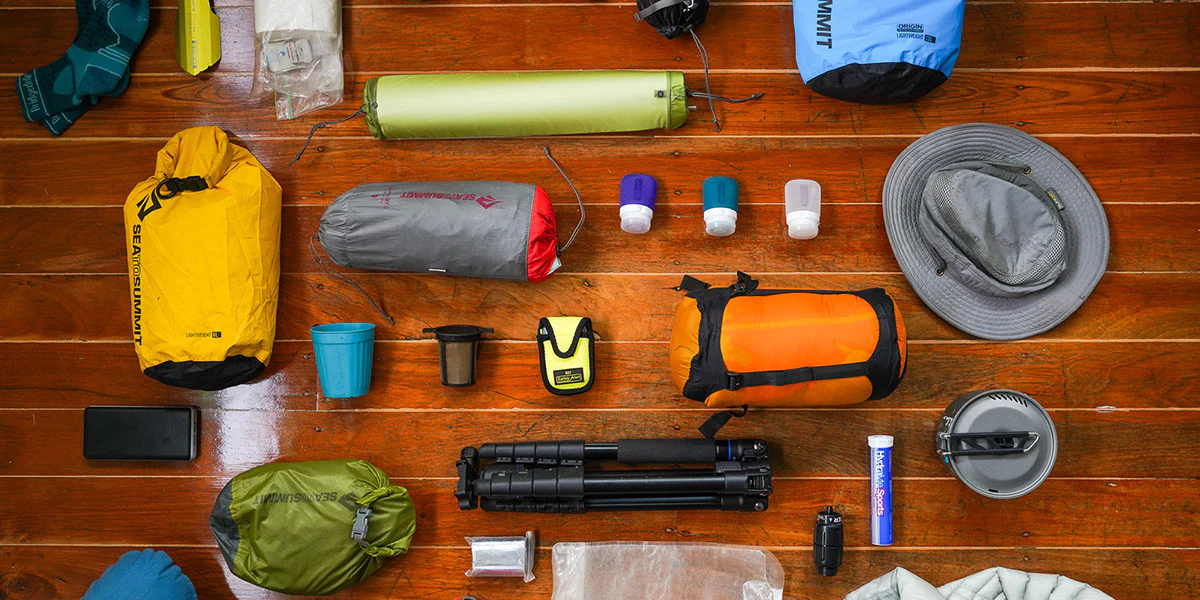The Big Three
As mentioned in my knowledge, the three most important pieces of backpacking gear are the shelter, the sleeping system, and the backpack. These are known as the ”Big Three” because they typically make up the bulk of your pack weight. It is important to choose lightweight and efficient gear for these items, as they will have a big impact on your overall comfort and enjoyment of your hike.
Shelter
There are many different types of shelters available for backpacking, from lightweight tents to tarps and hammocks. The type of shelter you choose will depend on your budget, the conditions you expect to encounter, and your personal preferences.
If you are looking for a lightweight and easy-to-set-up shelter, a tent is a good option. There are many different tents on the market, from ultralight backpacking tents to larger family tents. When choosing a tent, it is important to consider the number of people who will be using it, the size of the tent, the weight of the tent, and the features of the tent.
If you are looking for a more minimalist shelter, a tarp or hammock may be a good option. Tarps are lightweight and versatile, but they can be more difficult to set up than tents. Hammocks are also lightweight and comfortable, but they are not as versatile as tarps.
Sleeping System
The sleeping system consists of your sleeping bag and sleeping pad. The sleeping bag will keep you warm at night, and the sleeping pad will provide insulation from the ground. It is important to choose a sleeping bag and sleeping pad that are appropriate for the conditions you expect to encounter.
If you are backpacking in cold weather, you will need a sleeping bag with a high fill power and a low-temperature rating. If you are backpacking in warm weather, you can get away with a sleeping bag with a lower fill power and a higher temperature rating.
Sleeping pads come in a variety of materials, including foam, air, and inflatable. Foam sleeping pads are the most durable, but they are also the heaviest. Air sleeping pads are lighter than foam sleeping pads, but they can be more difficult to inflate and deflate. Inflatable sleeping pads are the lightest option, but they are also the most fragile.
Backpack
The backpack is the most important piece of gear for backpacking, as it is what you will carry everything else in. It is important to choose a backpack that is the right size for you, and that is comfortable to wear.
Backpacks come in a variety of sizes, from small daypacks to large expedition packs. The size of the backpack you need will depend on the length of your hike and the amount of gear you will be carrying.
When choosing a backpack, it is important to try it on with some weight in it. Make sure the backpack fits snugly but not too tightly, and that the shoulder straps and hip belt are comfortable.
Other Gear
In addition to the Big Three, there are a number of other pieces of gear that you will need for backpacking. These include:
- Stove and fuel
- Cookware
- Food
- Water purification system
- First-aid kit
- Map and compass
- Sunscreen
- Insect repellent
- Headlamp or flashlight
- Toiletries
- The specific gear you need will depend on the length of your hike, the conditions you expect to encounter, and your personal preferences.
Packing Tips
When packing your backpack, it is important to distribute the weight evenly. This will help to prevent back pain and other injuries. The heaviest items should be placed at the bottom of the backpack, and the lighter items should be placed at the top.
It is also important to pack items that you will need frequently in the front of the backpack so that you can easily reach them. This includes things like your water bottle, snacks, and sunscreen.
Backpacking Safety
Backpacking is a great way to enjoy the outdoors, but it is important to be safe. Here are a few safety tips to keep in mind:
- Tell someone where you are going and when you expect to be back.
- Bring a map and compass, and know how to use them.
- Be aware of the weather conditions and plan accordingly.
- Let someone know if you are changing your plans.
- Stay on the trail.
- Be aware of your surroundings and watch out for wildlife.
- Take breaks often and drink plenty of water.
- Let someone know if you are injured or lost.
- By following these tips, you can help to ensure a safe and enjoyable backpacking trip.







